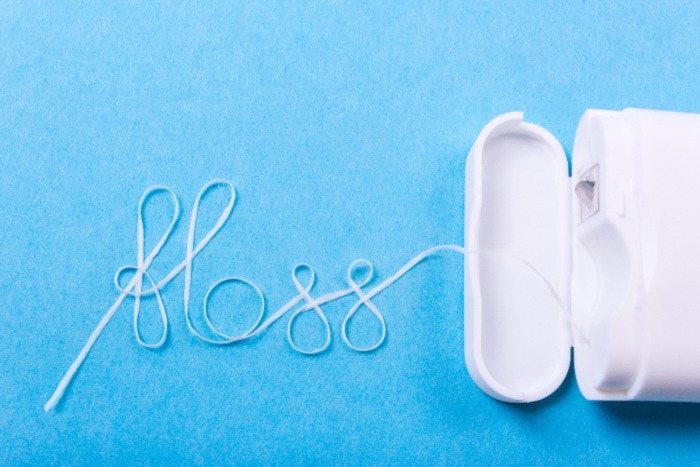
11 Fun Facts About Teeth
Teeth play a very important role in the overall health of the body. They are an essential part of speaking and eating. They can also help us to feel confident about ourselves and look good. Do you think you know a lot about teeth? We decided to go over 11 fun facts about teeth that you probably didn’t already know.
Flossing Removes 40% of Dirt from Your Teeth
Dental floss is one of the more important tools in your dental hygiene routine. Flossing does about 40% of the work required to remove sticky bacteria, or plaque from your teeth, leading to better oral health. Therefore, flossing plays a very important role in removing dirt and food particles from your mouth. If you want to maintain a healthy and vibrant smile, make sure that you are flossing correctly on a daily basis.

You Spend 5.5 Weeks of Your Life Brushing Your Teeth
Are you aware of how much time the average person spends brushing his or her teeth? Typically, Americans spend up to 5.5 weeks brushing their teeth during their lifetime. That adds up to almost 39 days in a life.
The First Commercial Floss Was Manufactured in 1882
Believe it or not, our cultural habit of flossing teeth has only been around for a little over 125 years. Toothpicks remained the preferred method of cleaning teeth until 1812, when the Codman and Shurtleff Company put the first commercial unwaxed, silk floss on the market. Dental floss didn’t become a household item until after World War II. It took many decades for floss to become affordable and used regularly, however, it is now commonplace in oral routines.
Dental Plaque Contains Over 300 Bacteria
Dental plaque is an accumulation of bacteria that forms on the teeth. It is vital to remove plaque regularly, as it can cause cavities and other oral health problems. Plaque contains over 300 different bacteria, which makes it a complex biofilm.
Teeth Are Not Actually Bones
One common misconception about teeth is that they are bones. They are not, in fact, bones. Teeth are made up of enamel, dentin, and pulp. While both teeth and bones are made of calcium, teeth are unable to produce bone marrow like bones can.
All Newborns Have 20 Primary Teeth
An interesting fact that many people don’t know is that all newborns have 20 primary teeth below the gum line. Each of these teeth will eventually appear as milk teeth. Each tooth has a unique shape to assist with fulfilling its role in the mouth. If a baby’s primary tooth is damaged, their adult teeth could potentially become crooked. It is extremely important to take care of your baby’s primary teeth to assure that their adult teeth will come in healthy and properly aligned.

The Average Bite Force of a Tooth is 162 psi
The measure of a creature’s biting power is referred to as bite force. When you think of bite force, you might think that it is something that applies primarily to carnivores. Bite force applies to herbivores and omnivores as well. The average strength of a human bite is 162 psi. What are some of the strongest bites on the planet? The Nile crocodile has a bite force of 5,000 psi, a bull shark 1,350 psi, and a grizzly bear 1,160 psi.
Tooth Enamel is the Hardest Part of the Body
Tooth enamel is the hardest part of the human body. Tooth enamel is composed of minerals, including fluoride, and protects teeth from decay. Decay can occur when bacteria in the mouth interact with food, causing acids to form that can damage the enamel. Over-brushing, grinding teeth, and exposure to acidic foods and drinks can also damage enamel. It is important to brush and floss regularly to keep the enamel healthy and strong..
Each Person Has a Unique Tooth Print
Most people are aware that each individual person has a unique fingerprint. However, did you know that if you have someone’s tooth print you can also identify that person with complete certainty? Despite this interesting fact, teeth prints are not commonly used to identify people. That being said, tooth prints can even be more accurate than fingerprints in some cases. For example, if someone has an altered or damaged fingerprint, a tooth print could potentially be used as a more accurate identification tool.
People Generally Prefer Blue to Toothbrushes Over Red
Studies have long shown that people prefer blue toothbrushes to red toothbrushes. This isn’t a huge surprise, as a cool, calm color like blue is often seen as less aggressive than red. There are many different factors to take into account when selecting a toothbrush. Color for some, is certainly on the list.
Chewing is Determined by Which Hand is Active
Chewing is a reflex that helps us consume and digest our food naturally. The way in which we chew is more often than not controlled by which of our hands is dominant. Left-handed people tend to chew their food on the left side of the mouth, whereas right-handed people tend to chew with the right side of their mouth. This difference has little to do with many of the other factors that one would commonly think of, rather, the dominant hand plays the most significant role.
